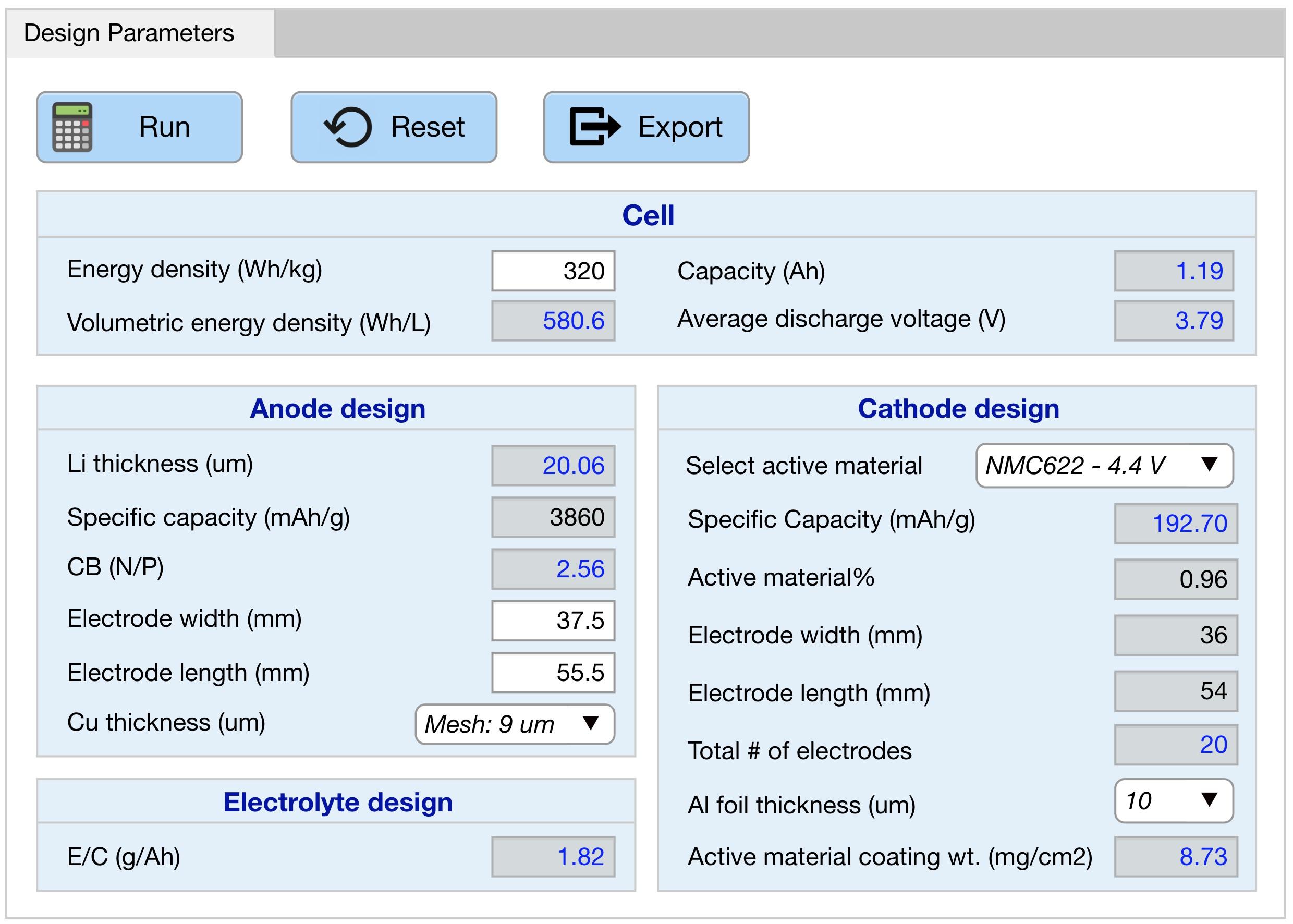Li-Batt Design App
Li-Batt Design App
For lithium-metal pouch cell design
For lithium-metal pouch cell design
PNNL’s Li-Batt Design App is a first-of-its-kind software to help battery developers and researchers easily and rapidly design lithium-metal-based pouch cells. Li-Batt Design App applies a vast and complex array of available materials and parameters. Using machine learning algorithms, the software calculates optimal cell configurations, saving businesses and research institutions time and money.
Key features and benefits of Li-Batt Design App include:
- Automatically provides a range of optimal lithium-metal-battery pouch-cell designs for rapid prototyping or cell development
- Cell dimensions can be easily adjusted based on the user’s needs
- Simple and friendly user interface
- Clearly labeled input fields
- Easy-to-interpret, graphics-based output
- Detailed cell-design parameters for fabrication can be exported to a spreadsheet using one click
The Li-Batt Design App helps researchers quickly obtain all the possible design parameter combinations, including those for different cathode materials and pouch cell dimensions, to achieve a desired energy density.
PNNL battery experts gathered enough experimental data on high energy lithium metal batteries to ‘train’ the machine learning engine that runs the software. The trained software quickly provides designs and outputs for cell energy and capacity.
Design software now available for researchers and industry
Battery researchers in academia, small businesses, and industry can now purchase a license to use the software from PNNL. To learn more about the technology, get pricing, and purchase the software, contact Allan Tuan, PNNL commercialization manager. For technical information or to collaborate, contact Jie Xiao.

Building better lithium-metal batteries
Through a simple, flexible interface the user can custom design a lithium metal battery based on available cathodes and cell accessories in the market. The user can also input a new cathode material with voltage and capacity information to generate mathematical solutions based on design parameters.
A faster track to lithium-metal batteries
Researchers across the world are focused on developing lithium metal batteries because of their high energy density, providing the opportunity to double the energy storage of lithium ion batteries that power our cell phones and electric vehicles today. Li-Batt Design App can help advance research for this promising new approach to batteries.
When it comes to energy storage research, PNNL’s goals are to innovate, validate, accelerate, and collaborate. Li-Batt Design App embraces each of those goals to support advanced battery development through machine learning.
Software operating requirements
|
Operating systems |
Processors |
Graphics |
|
Windows
Mac
|
Minimum: Any Intel or AMD x86-64 processor Recommended:
|
Minimum:
Recommended:
|
|
Disk |
RAM |
|
|
Minimum: 5.6 GB of HDD space for a typical installation Recommended: An SSD is recommended |
Minimum: 4 GB Recommended: 8 GB
|
|
Citation: Jie Xiao, Yang Yang, Dianying Liu, and Zhiqun D Deng, Li-Batt Design App, Pacific Northwest National Laboratory, Richland, WA, USA